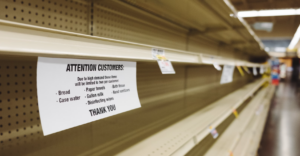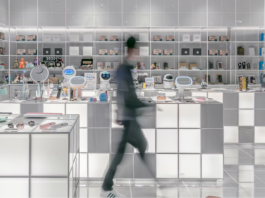Communication is key for any relationship. The business-consumer relationship is no different! Communicating smoothly with your customers can, however, be a challenge depending on the size and type of business in question. For some companies it is enough to have a reception desk customers can turn to and get all the answers. For others, this is either not a possibility, or a single reception desk simply cannot meet the demand. There is also the case of customers having specific requests or needing assistance, and finding no easy way to get it.
Digital signage can make information flow smoother and allow communication to flow from either side of the B2C relationship by providing real-time updates as the need for information arises, as well as allow customers to ask for specific information or assistance via digital displays.
Real-time updates
Updates via digital signage provide applicable information from the business to the consumer. For example, if the stock on a featured product has suddenly run low, or if it’s sold out entirely, highlight it on your displays accompanied by appropriate content. This could be a banner informing about the upcoming restock date or an alternative product which can act as a substitute. With digital signage, the process is much easier and faster to implement than writing signs, or making announcements every few minutes.
Queue and waiting time displays can be triggered when there is a sudden spike in traffic. Inform people on the average service times or any efforts you are making to reduce the traffic. For example, if additional cash registers have been made available, placing this information on displays by the queue area together with an audio announcement can help traffic flow more evenly.
Real-time updates are particularly important when it comes to emergency alerts. In case of evacuation reasons, communicating with your customers through digital signage can quickly broadcast instructions for shoppers, directing them to the nearest exit and providing emergency info.
Easy access to important info
Depending on the business context you’re in, it will be very easy to isolate information which is most frequently requested by your customers. If you’ve built a list of FAQs, for example, they can be a great source of inspiration for digital signage content. Deploying this content on a digital display builds understanding and acts as another flow of information from the business to the consumer.
For example, larger establishments which often have customers asking for wayfinding instructions can build a detailed map of the area. Each display may have a small “MAP” button in the corner which lets users find what they’re looking for. Information terminals at key areas are an excellent way to provide wayfinding information, alongside everything else a shopper might need.
In the realm of self-service, communicating with customers regarding key information is even more important. For self-check-ins in hotels, for example, a customer might need additional info on the proper procedures. They may also want to know when specific hotel services will become available, or even get suggestions on nearby locations to visit. All these are simple examples for you to brainstorm over.
Lastly, any sort of interaction involving a touchscreen display can be enhanced by providing an information menu on the side or in the corner. It’s up to you, of course, to determine what this information panel will entail. Consider things like operating hours, directions, schedules, social media info, multilingual support, contact information, etc.
Let users make requests and customize orders
While it’s important to establish a flow of information towards the consumer, it is similarly important to enable the consumer to communicate with the business. Self-service is a great example for this. As customers interact with your displays to place orders or schedule services, they might want to make a custom request, a small change, or something otherwise special not included in the content they are engaging with.
The clearest solution is to add a button directing the user to a custom request form. You may even add a QR-code in the corner of a display which will direct the user online and guide them through the process.
Issue reporting and assistance requests
In certain business models, customers may find it difficult to reach a staff member who can help them directly. Be it in self-service, large retail stores, or busy service centers, digital signage can bridge this gap by letting customers request assistance via touch screens or by scanning QR-codes.
For example, a customer in a self-checkout area can use a touchscreen to call an employee for help, while a hotel guest can report a room maintenance issue via a digital kiosk. This setup reduces frustration and speeds up response times.
You’ll see an excellent example of this in an interview we did with Oskar Rosnes, CEO of ScreenPublishing. He talked about how adding a single button via digital to bus stops managed to save thousands of dollars, as it allowed users to inform the bus driver if someone needed help getting on the bus. This saved time, making the entire system run more smoothly. Consider if there are similar contexts in your own business, where a common need or request is made, and the time between said request being made and it being provided can be shortened.
Collect feedback and survey info
Feedback and testimonials are another example of communication between the consumer and the business. Your customers are directly talking to you when they point out things you’re doing well, and especially things you’re doing wrong. Interactive kiosks at exit points or cash registers are a great way to gather information of this sort. It can be as simple as a single button press choosing between a happy or a sad emoji. Or it can be a more in-depth testimonial with several performance ratings.
As we have established, communication is the key to success. And with digital signage software, you can transform any display into an opportunity for smooth communication on either end of the business-consumer relationship!
Cover image by Volodymyr Hryshchenko.






